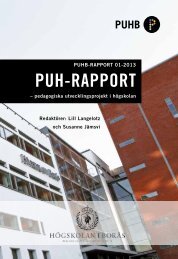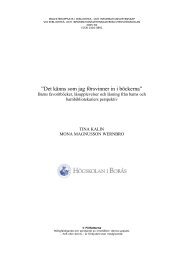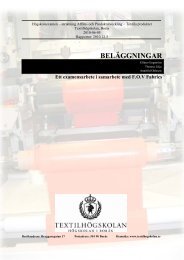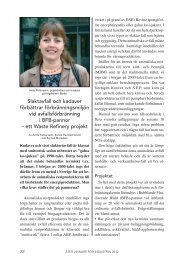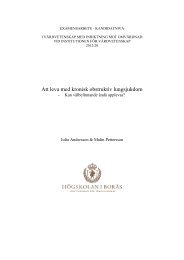2.1.8.2. Absorbency Under Load (AUL) - BADA
2.1.8.2. Absorbency Under Load (AUL) - BADA
2.1.8.2. Absorbency Under Load (AUL) - BADA
Create successful ePaper yourself
Turn your PDF publications into a flip-book with our unique Google optimized e-Paper software.
1<br />
INTRODUCTION<br />
Superabsorbent hydrogels are crosslinked, hydrophilic polymers which can absorb and keep a<br />
large amount of water or biological fluids in their polymeric structures and shrink after de-<br />
swelling.<br />
Substantial amount of research has been reported on the properties of superabsorbent hydrogels,<br />
particularly on the pH, temperature and sensitivity to ionic strength. A variety of novel aspects of<br />
superabsorbent polymers (SAP) also have been investigated. These include cosmetic and toiletry<br />
formulations [1] , immobilized enzyme in reactors [3] , contact lens materials [4] , water-retention in<br />
agricultural and horticultural soil [1] , flocculation agents [1] , liquid radioactive wastes treatment [9] ,<br />
sensors [1] and many other applications.<br />
Two types of polymers, biodegradable and non-biodegradable polymers, are used for providing<br />
of superabsorbent polymers (SAPs) for many applications. The biodegradable hydrogels are<br />
usually made from natural polymers such as proteins, chitosan, poly-lactic acid (PLA), poly-<br />
glutamic acid, hyaluronic acid and some cellulose derivatives. The non-biodegradable hydrogels<br />
are made from synthetic materials, such as acrylic acid polymers, poly-vinylalcohol, poly-<br />
methylmetacrylates, poly-vinylpyrrolidone, poly-acryl amide and poly-vinyl acetate. The non-<br />
biodegrable synthetic hydrogels show several properties for different purposes, but remaining the<br />
number of monomers in final products can create some serious problem for human body and<br />
environment.<br />
Recently the term of biodegradation and non-toxic polymers have been introduced as main goals<br />
in the development of new technology. In this manner, non-toxic biodegradable hydrogels have<br />
been studied extensively for biomedical applications such as bio-adhesive, wound dressings for<br />
1



